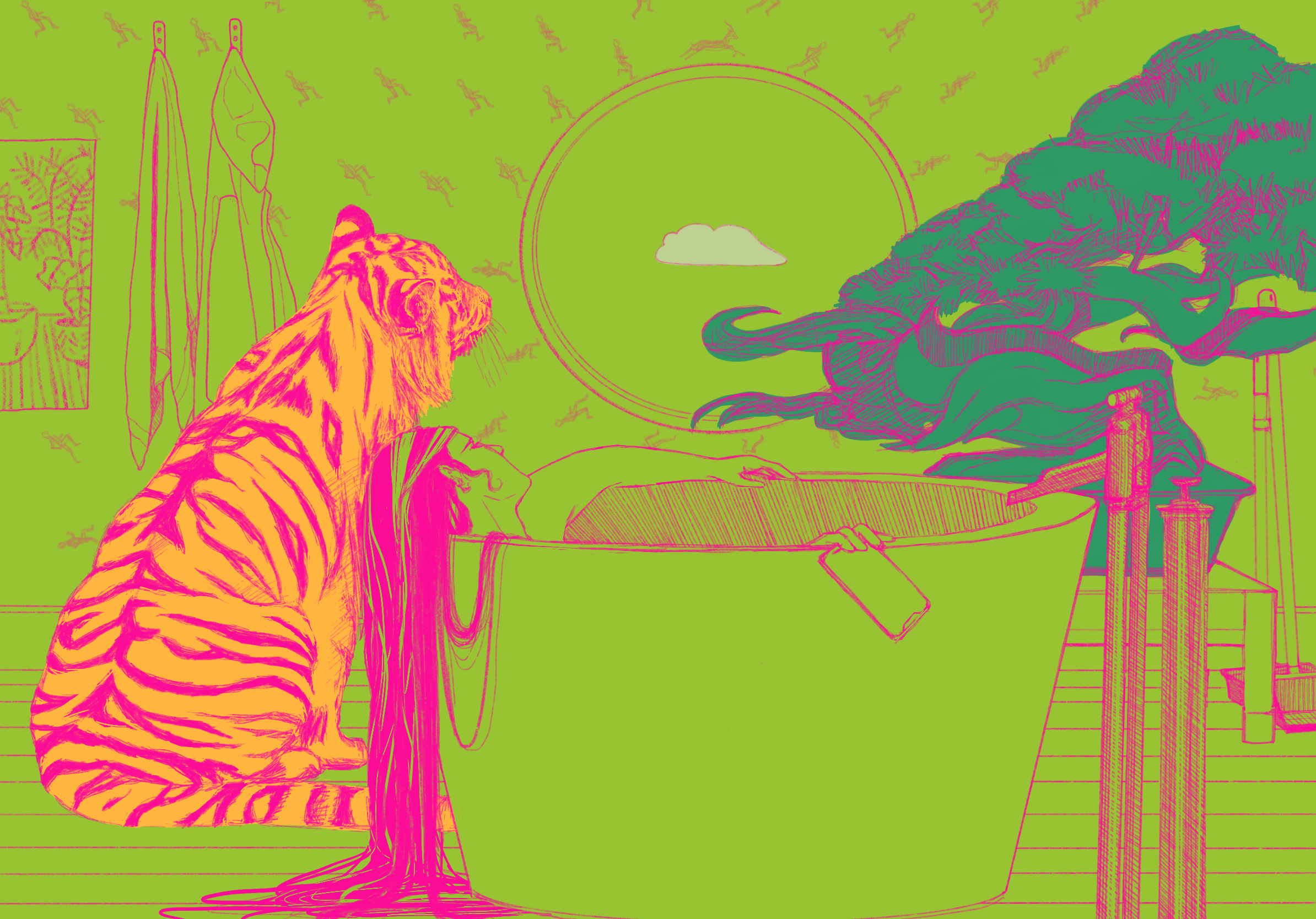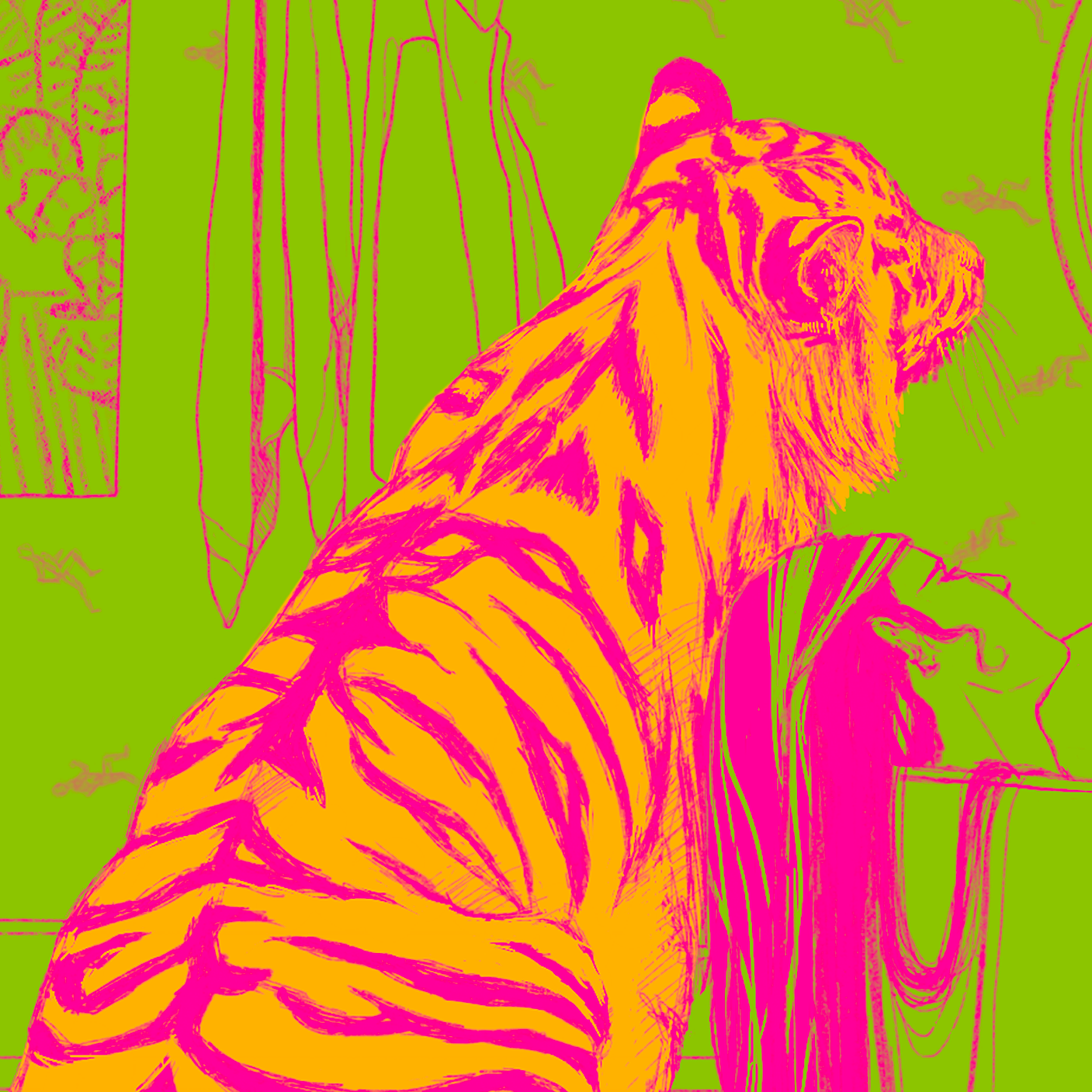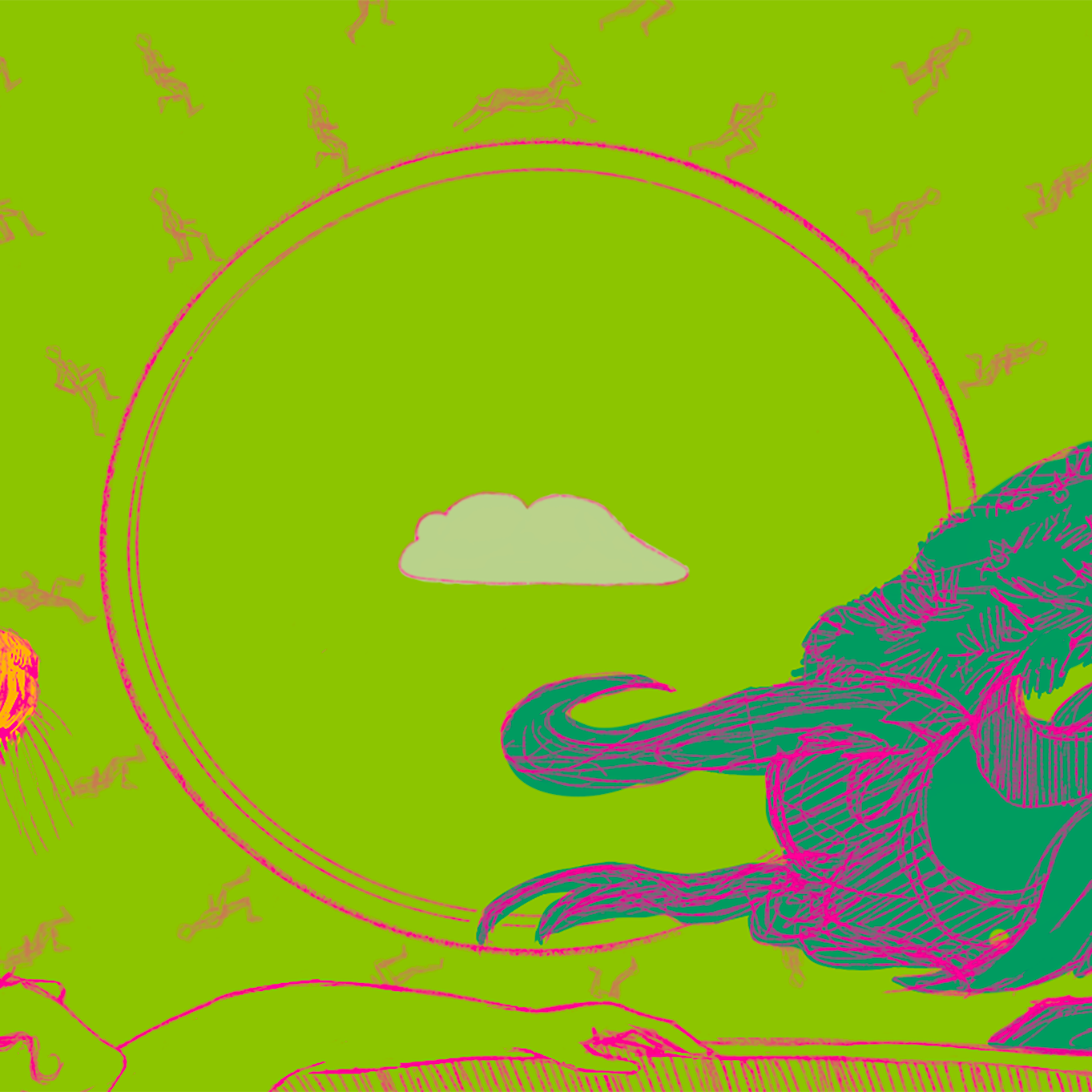2022
The Trouble With Wilderness

Digital painting
At the height of the COVID-19 pandemic, wealthy urban elites retreated to rural getaway houses and inspired the cultural phenomenon of cottagecore. People around the world shared eco-erotic tweets about “nature coming back” in the absence of human presence in major urban cities like Venice, Delhi, and New York City.
This romanticization of nature—“primitive” simple living, the nonhuman world, and wilderness—has long cultural roots. Environmental historian William Cronon traces American fascination with “wilderness” to a historical romantization of sublime landscapes (or places one could be close to God) and primitivism (a desire for simplicity in the face of growing complexity in modernizing cities).¹ The places and sights that Americans consider to be “wild” are not natural at all; most landscapes were constructed, sanitized of Indigenous peoples and other long-time stewards of the land, and actively maintained by public park services today.
In recognizing the violent history of romantizing American wilderness, Cronon implores us to stop looking for the wilderness “out there” and to instead find it at home all around us. That is, he asks us to “honor the Other within and the Other next door as much as we do the exotic Other that lives far away.” Making home becomes an active process of taking responsibility for the place we are in and the places that hold us.


Details
This illustration explores this desire for wilderness “out there” while being surrounded by many vibrant living and representations of living beings “in here.”
-
William Cronon, “The Trouble with Wilderness; or, Getting Back to the Wrong Nature.” In William Cronon, ed., Uncommon Ground: Rethinking the Human Place in Nature, New York: W. W. Norton & Co., 1995, 69-90.